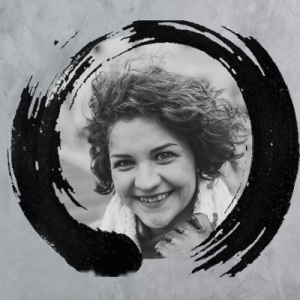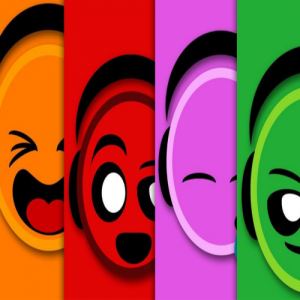I was reading Thinking Fast and Slow by Nobel prize winner Daniel Kahneman. I highly recommend this book if you have the time.
In this book the author portrays the brain as two systems. System 1 as they call it is the intuitive quick (fast) thinking part of the brain while System 2 is the more methodical (slower) thinking part. Both systems work together to allow us to make fast decisions as well as decisions that require a thorough thought process. I read this book with the mindset of a senior consultant who is looking for self-improvement with regards to how I respond to my clients. “Fast thinking” as they refer to it could possibly get you into trouble.
As with all my learnings I will always apply the lessons to all other aspects of my life. Salsa is a big part of my life so I wanted to share some interesting thoughts about System 1 and System 2 for Salsa dancers.
Initial Learning Phase
I do believe that the majority of people who dance Salsa in my circles start off as System 2 dancers. The coordination of body parts to a rhythm is more than the fast thinking System 1 can handle. System 2 dancers are generally still trying to understand and rationalise this new hobby. During the Initial Learning Phase System 2 receives lots of information but most of this will require self-validation (or emotion) before this can be accepted into System 1. This is not just a case of listening to an instructor repeating the words but the dancers actually experiencing something.
For example:
Most leaders in Salsa will start off stumbling around but will within a few months have a dance (or an event) which will suddenly make everything click. I often call this the “moment of clarity” and it is the first point in a dancer’s career where some information has been put into System 1. This is the first time that System 1 and 2 are working together to make magic happen. We all love System 1 as it allows us to perform actions without the stresses of thinking.
There are those who start off as System 1 dancers. I used to think that my protégé is one such dancer as she is doing a range of movements without having spent the time thinking about it in System 2. Then it hit me that she has been watching YouTube clips of social dancing and the emotions and excitement she felt meant that this information went into her System 1. Now it is coming out without her knowledge and she is thinking that she is just responding to music. Most people that call themselves natural dancers probably had an upbringing where dance was in their lives and this allowed time for the information to hit System 1.
This also gives me a way of thinking about students with bad habits. These habits often take a long time to remove as they have reached System 1 and require an experience to be removed. This is something that has to be felt by the student and explains why I can tell a student something all day long but unless they experience something they will not change.
For Example:
I conducted an experiment this weekend and was shocked with the results. I have a student who is passionate about Salsa and has been dancing for 2 years in one if London’s popular Salsa bars. She came to TNT and then decided that she wanted more and did the right thing of going back to our foundation class to work on her fundamentals. I noticed that she had one habit that was stopping her progression and that was her inability to keep her steps tiny. In the club that she had been dancing in she was often thrown around with far too much energy and had to take huge steps, but this was fun and exciting for her and thus big steps went into System 1. I was telling her this for four weeks but then decided to create a routine that would allow her to experience the benefits of small steps. I know that she desperately wants to improve and will try her best to keep pace so in my Sunday intermediate partnerwork class I created a harder than normal routine with a host of different wrappings.
This routine requires the follower to keep really close to her partner and there is no room for big steps. Once I had explained the steps I put on the fastest Joe Cuba music possible and made the students all rush through the routine. My hope was that the adrenaline that she would experience and the joy of getting it right a few times which was only possible through small steps would allow her big step habit to be overwritten. All students were getting the routine by the end of the two hour class and she was smiling at her ability to keep up. Her steps became smaller and more controlled and I hope that this has done the trick.
The initial learning phase is the most important phase of any Salsa dancer so therefore it is good to understand what implications of learning there maybe.
Continued Growth Phase
Once you have been dancing for a few years you will then go through your continued growth phase. This is where you accumulate all your content or so you think. If you have been dancing for many years hopefully you will see this in yourself.
When you are going through the continued growth phase most dancers will go to as many classes as they can, buy and watch DVDs and go to congresses, but the truth is you are making very inefficient use of your time. Less than 10% of material from a congress will be remembered (if that much), the majority of DVDs remain unwatched or browsed through and unabsorbed. The reason is that overloading System 2 is not the most effective way of getting information into System 1 and this is what most people try to do.
For Example:
Most people who go to a congress will remember their favourite dance of the week as opposed to their favourite class. Three months down the line they will remember their favourite show as opposed to what they had for breakfast. The reason? Emotion is the most effective way of getting information from System 2 to System 1.
I have seen student/performance groups as a good way to send information into System 1 as you are repeating a small subset of movements for a long period and have a deadline. The experience of performing is also an emotional free-for-all as some people will feel fear, anxiety, and excitement all of which are emotional. How many people out there have done performance courses and realised that the movements they are doing when social dancing are taken directly from the course? NOTE: This is why I think that when you do a performance course you should still take classes otherwise the material of the performance course could potentially wipe away the material already in System 1.
For Example:
I used to be in Laith Sami’s Student Performance Group (LSPG) where we would drill a 4-5 minute routine for 10 weeks and then be expected to perform. Laith had the concept of a torture weekend after the 10 weeks where we had a Saturday and Sunday from 10-6 for just drilling and polishing. Back then I just saw this as fun but I see that Laith had created (I am not sure if he is aware of this) a high intensity and highly exciting way of getting us to repeat the routine and increasing the chances of the routine going into System 1. I was in two of his courses and remembered that this is the point where the routine finally stuck.
I have heard Salsa being referred to as a financial blackhole where plenty of money is spent but not much is learned. I think that understanding System 1 and 2 here will add a massive amount of value.
Summary
For my classes I would always try to create different experiences for my students i.e. going slow, fast, using humour or tasteless jokes to get the students going or to hammer home a point. I will also always try to get an emotional response from my students. Thankfully my career has given me a lot of training with regards to how to work with people but I do feel that it is a dangerous game at times.
But I hope that this read was an interesting one and that it has given you food for thought.





Leave a Reply